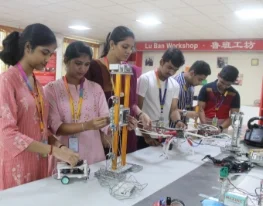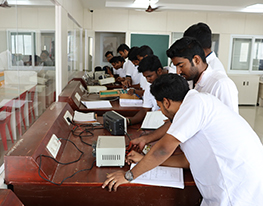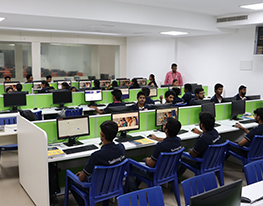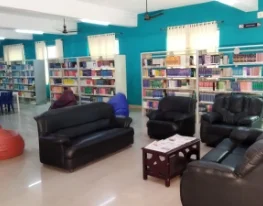National Assessment and Accreditation Council (NAAC)
India has one of the largest and diverse education systems in the world. Privatization, widespread expansion, increased autonomy and introduction of Programmes in new and emerging areas have improved access to higher education. At the same time, it has also led to widespread concern on the quality and relevance of the higher education. To address these concerns, the National Policy on Education (NPE, 1986) and the Programme of Action (PoA, 1992) spelt out strategic plans for the policies, advocated the establishment of an independent National accreditation agency. Consequently, the National Assessment and Accreditation Council (NAAC) was established in 1994 as an autonomous institution of the University Grants Commission (UGC) with its Head Quarter in Bengaluru. The mandate of NAAC as reflected in its vision statement is in making quality assurance an integral part of the functioning of Higher Education Institutions (HEIs).
The NAAC functions through its General Council (GC) and Executive Committee (EC) comprising educational administrators, policy makers and senior academicians from a cross-section of Indian higher education system. The Chairperson of the UGC is the President of the GC of the NAAC, the Chairperson of the EC is an eminent academician nominated by the President of GC (NAAC). The Director is the academic and administrative head of NAAC and is the member-secretary of both the GC and the EC. In addition to the statutory bodies that steer its policies and core staff to support its activities NAAC is advised by the advisory and consultative committees constituted from time to time.
Extended Profile
Criteria 1: Curricular Aspects (100)
Criteria 2: Teaching- Learning and Evaluation (350)
Criteria 3: Research, Innovations and Extension (120)
3.1
|
Resource Mobilization for Research (15)
|
| 3.1.1 QN |
Grants received from Government and non-governmental agencies for research projects, endowments, Chairs in the institution during the last five years |
| 3.1.2 QN |
Percentage of teachers recognized as research guides |
| 3.1.3 QN |
Percentage of departments having Research projects funded by government and non government agencies during the last five years |
3.2
|
Innovation Ecosystem (10)
|
| 3.2.2 QN |
Number of workshops/seminars conducted on Research Methodology, Intellectual Property Rights (IPR) and entrepreneurship during the last five years. |
3.3
|
Research Publication and Awards (25)
|
| 3.3.1 QN |
Number of Ph.Ds registered per eligible teacher during the last five years |
| 3.3.2 QN |
Number of research papers per teachers in the Journals notified on UGC website during the last five years |
| 3.3.3 QN |
Number of books and chapters in edited volumes/books published and papers published in national / international conference proceedings per teacher during last five years |
3.4
|
Extension Activities (50)
|
| 3.4.2 QN |
Number of awards and recognitions received for extension activities from government / government recognised bodies during the last five years – Opted out by HEI |
| 3.4.3 QN |
Number of extension and outreach Programmes conducted by the institution through NSS/ NCC/ Red Cross/ YRC etc., ( including the programmes such as Swachh Bharat, AIDS awareness, Gender issues etc. )and/or those organised in collaboration with industry, community and NGOs during the last five years |
| 3.4.4 QN |
Average percentage of students participating in extension activities at 3.4.3. above during last five years |
3.5
|
3.5 Collaboration (20)
|
| 3.5.1 QN |
Number of Collaborative activities for research, Faculty exchange, Student exchange/ internship per year |
| 3.5.2 QN |
Number of functional MoUs with institutions, other universities, industries, corporate houses etc. during the last five years |
Criteria 4: Infrastructure and Learning Resources (100)
Criteria 5: Student Support and Progression (130)
Criteria 6: Student Support and Progression (130)
Criteria 7: Institutional Values and Best Practices (100)

















 Quick Links
Quick Links
